Devir Games have come out relative obscurity here in the UK, and delivered a small box game that looks like a big box game. A collect-and-deliver Euro with a dicey rondel and a historical construction theme? Ticks all the boxes, let’s have a look.

If you’d asked me a few months ago who Devir Games are, or the same of designers Isra C or Shei S, I’d have just looked at you blankly. Thanks to some coverage ahead of this year’s Spiel Digital for Essen though, plenty of people saw this game about building the iconic St Basil’s cathedral in Moscow. I was one of them, and as soon as I saw the dice moving around a rondel, I was sold. I pre-ordered a copy and was lucky enough to get one of the small initial shipment to Europe.
What’s In The Box
As I eluded to at the start of the review, the most surprising thing about The Red Cathedral is that it comes in a small box. Not the usual Kallax-friendly standard square box size. To people like me, who like a heavy-weight game, that wouldn’t normally lead you to think there’d be masses of depth to the game. Less pieces equals less complexity, right? Well, not necessarily.
Each player has their own player board where they store their resources, where space is limited, as well as decorations for completed sections of the cathedral. There are also some spaces to store workshop upgrades, which I’ll cover later.
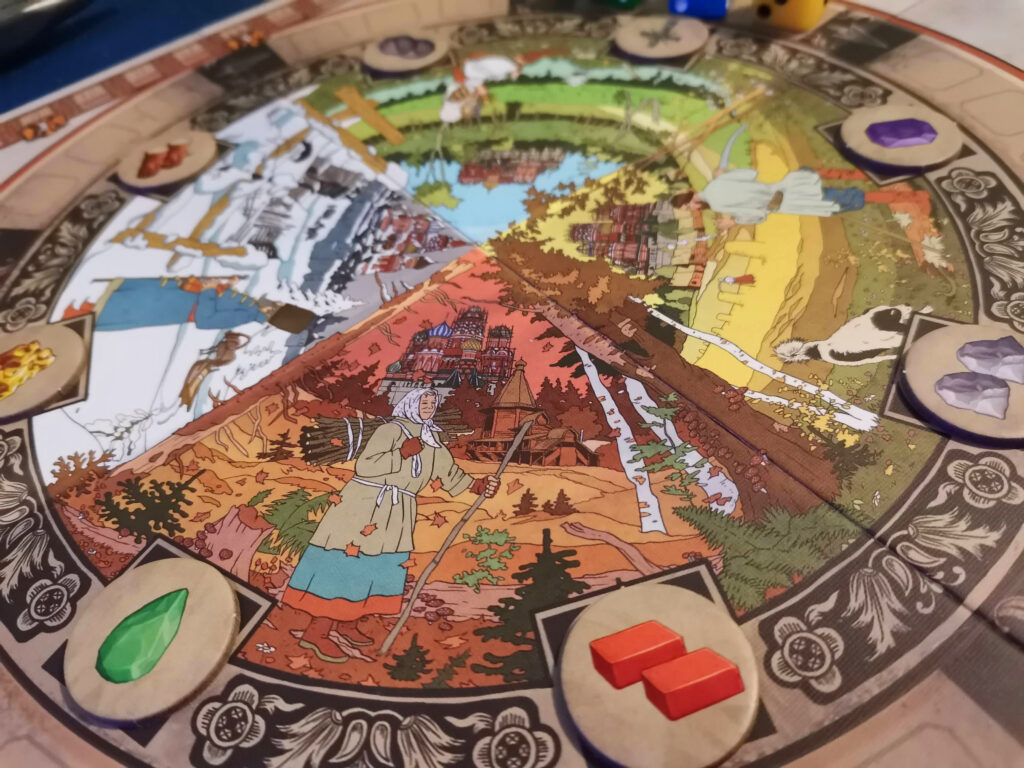
There’s a market board, which is setup randomly each time you play. The illustrations on this one, showing the seasons, are really pretty. The cathedral you’re building, the heart of the game, is represented by base, wall, and spire cards. There’s a good selection of each, adding some variety to repeated plays.
Finally the resources are really nice. Stone, gold, bricks and wood are nice little wooden pieces, and there are some shiny purple and green gems. My favourite pieces in the box though are these intricate little double-headed eagles from the Russian coat of arms which act as score markers. Overall, a nice set of bits in the box.
How Does It Play?
This is the bit we’re most interested in. What is the red cathedral, and how do we play it?
Concept & Setup
The game puts you in the role of a construction team. The plans for the cathedral to be built are drawn randomly from a deck of cards, and cards representing each section are laid out, to match the design. Each card shows the roubles (currency) and prestige points awarded for completing it, along with the resources needed to complete it, and a workshop tile.
To one side the market board is setup. Guild cards are placed randomly in each quadrant, and the resource tiles are placed randomly around the market. The all-important dice are dropped in a random order and orientation, starting at a specific spot and then advancing clockwise.
Finally, each player takes a player board and their matching banners, decorations, and a small amount of roubles to start the game with. During the game players are trying to earn prestige and recognition points by collecting resources, using them to build sections of the cathedral, then adding their ornamentations and decorations.
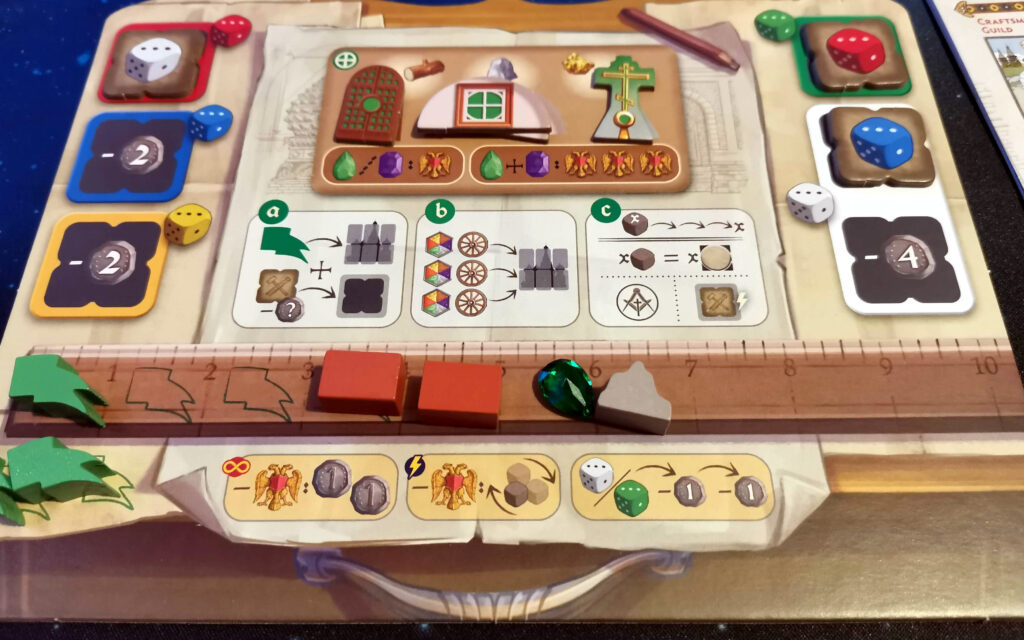
Gameplay
Okay, so we’re collecting stuff and building stuff. But how? On their turn a player can take one of three actions:
- Claim a section. Players start the game with six banners, and using this action allows them to take one from their board and put it on a construction card to claim it. You can only choose a card that’s on the base, or directly above a section that’s either been claimed or completed. Each card has a workshop tile on, and when a player claims one they can pay the indicated number of roubles to place it face-up in one of the dice spots on their board. More on why this is important in a minute.
Getting your banners out onto the cathedral is important, as they come from your storage space. This means when they come out of your storage, there’s more space for your gained resources. Managing this space is really important in the early stages of the game. - Send resources to the construction. This action lets you send up to three resources to the cathedral. These can be the materials needed to complete one of your claimed sections, or jewels and materials to add your limited decorations to completed sections. Completed building sections reward you with prestige and possible money too, while decorations increase your recognition and will increase your chances of a higher share of points at the end of the game.
While you can only build sections of the cathedral that have your own banner on, you can add decorations to anyone’s completed section. Hmm, sounds like a chance to piggyback on someone else’s work to me… - Visit the market. This is where the strategy really comes in. On your turn you can choose any of the dice on the market rondel, and move it clockwise as many spaces are there are pips showing on top of it. So a five lets you move it five spaces. If the die you choose is white or the same as your player colour, you can pay a rouble for each additional space you want to move it.
Wherever the dice lands, you claim the resources shown in that spot, multiplied by the number of dice in that spot. So for example, if your chosen die ends up in the spot that gives you two wood, and there’s already one die there, you’ll gain two wood x two dice = four wood. On top of that, you can use the power of the guild card for the quadrant you land in, which might let you do things like paying for extra resources, or trading yours for others.
On top of that, if the colour of die you moved had a workshop tile on your player board (remember those tiles we could pay for and claim during the Claim a section action above?), you get to activate that too. It might be something as simple as ‘gain a stone’, but the really fun ones are the ones that then let you activate another coloured die and take whatever resources are at the same spot as it.
Finally, all of the dice in the section you landed in are re-rolled, making for some interesting choices for the next player.
Prestige & Recognition
The scoring track has two sides. One is for prestige points, which are the equivalent of victory points in any other game. You score a point, you move your marker along one space. What you can also see here though are the eagle symbols, and these are recognition points. In the latter half of the scoring track, prestige and recognition track along almost equally, one-for-one. But earlier in the track, and therefore earlier in the game, each prestige point might be two, three, or maybe even four or five spaces along. Prestige is gained by adding decorations to completed sections, so managing to gain two or three recognition points early in the game can be the equivalent of gaining 10-14 recognition points, which is a big jump.
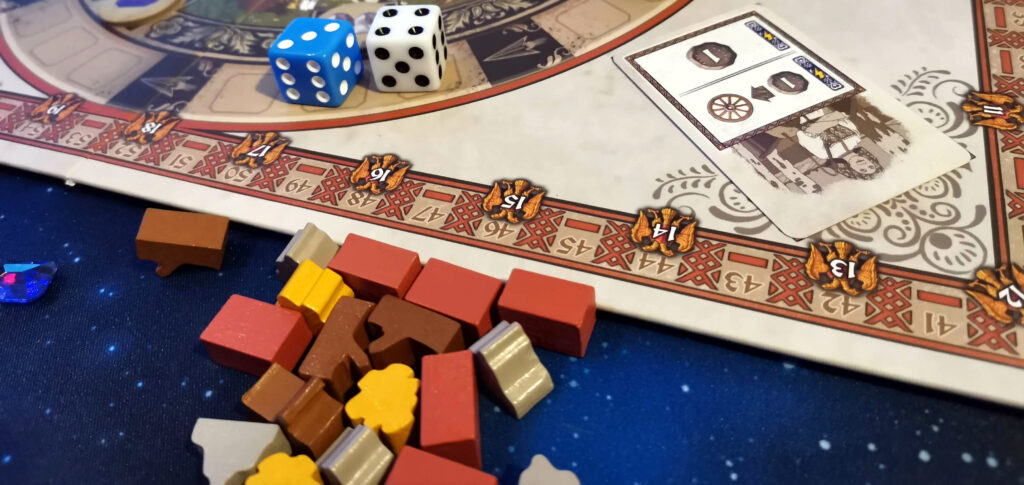
Once a player completes their sixth and final section of the cathedral, the end of the game is triggered, and final points are awarded for how much players contributed to each cathedral tower.
Final Thoughts
You might think a Euro with only three possible actions is a bit light, especially for someone like me who likes his games heavy and full of difficult choices.. And you’d be right, The Red Cathedral is definitely on the medium side of complexity. The important thing to remember though is that there isn’t a direct correlation between a game’s weight and how good it is. 6 Nimmt! is a game I could play forever, and it’s incredibly simple to play.
In short, The Red Cathedral is brilliant. It’s quick to setup and put away, it’s easy to teach and learn, and it does some really interesting things. I really like the dice rondel, it’s reminiscent of Teotihuacan, in the way that you can really ramp up the rewards if you manage to get multiple dice in one spot, but unique enough because you can pay to move further, and the dice get rolled after your turn, making planning ahead a real challenge. I absolutely love the combos you can build by moving one die, then activating another because you have its workshop tile.
Choosing where and when to build gets very strategic too. If you manage to complete a section above someone else’s area that’s still under construction, they lose points. But to do that you’re neglecting to maybe build a base section which tend to score really well. The fact that you can built your decorations on someone else’s section – and vice-versa too – means you have to keep a close eye on what resources and decorations each other player has. It’s equally frustrating and glorious to sneak in and score off the back of someone else’s hard work.
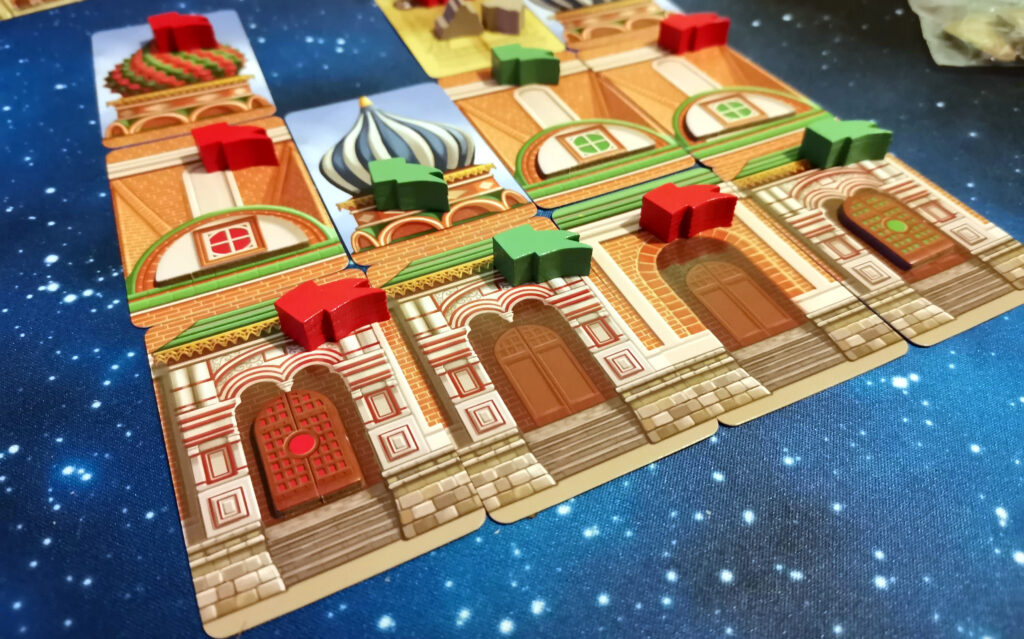
I also love the asymmetric scoring track. It’s possible to start the game collecting jewels, with a view to just decorating others’ sections, claiming big jumps for prestige points instead of recognition.
Replayability
There’s sometimes a fear with a Euro being a bit lighter, that it might get boring quickly, or be solvable. The Red Cathedral does a great job of negating that with the degree of randomness in every game’s setup. Where each resource goes on the wheel. which guild cards are drawn, and where they’re placed. Which design gets chosen for the cathedral. which workshop tiles are in the game, and where they are on the cathedral plans. All of these are random each time you play, and if that still manages to get too easy for you, the player boards have an advanced side too to make things more interesting.
In all honesty, Llama Dice (the collective name that designers Sheila Santos and Israel Cendrero go by) could have gotten away without this level of depth. We’re talking about a small box game here, which costs around £30. No-one is realistically going to expect something like Anachrony or A Feast For Odin, but what they’ve managed to put together is pretty much the perfect medium-weight Euro game,
Meet Ivan
Still not convinced? There’s even a fully-fledged solo mode in the box. Not a beat-your-own-score type either, it’s an actual opponent called Ivan who’s going to try to steal the best spots and decorate your buildings, through the use of an AI deck of cards. The bot is really finely balanced too, beating it is far from a walk in the park.
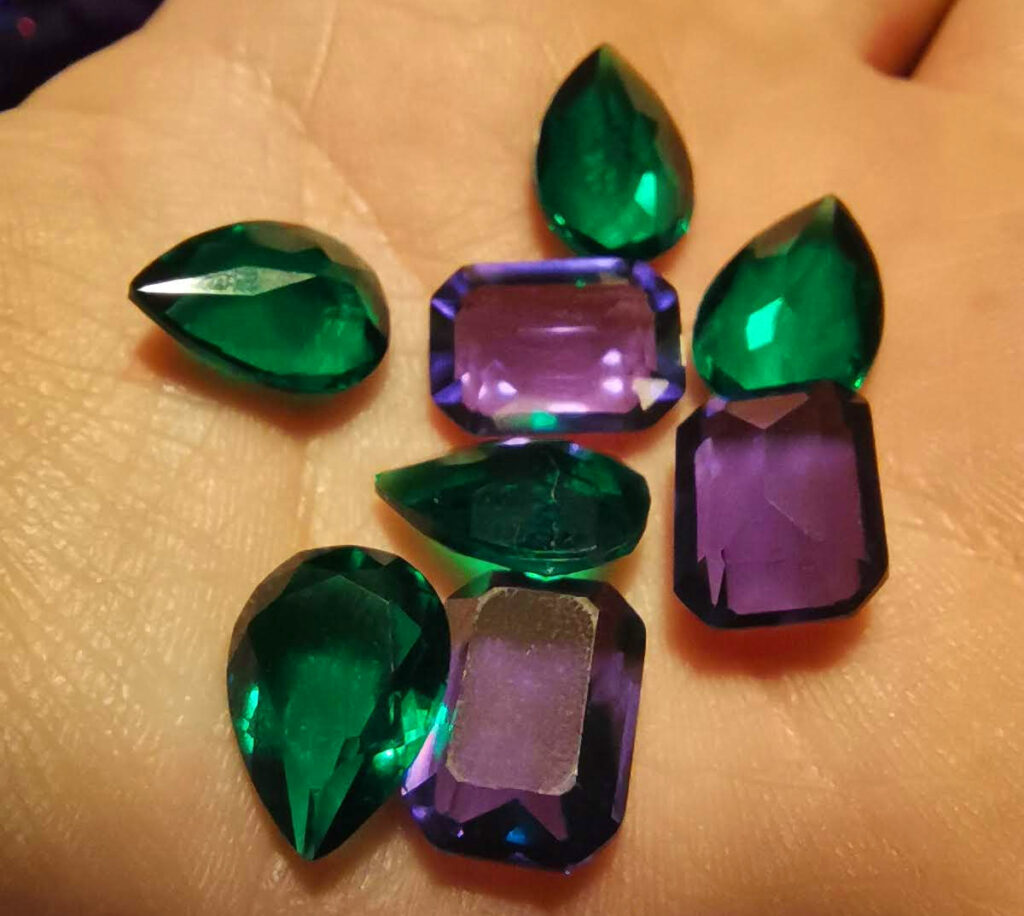
Solo is really important to a lot of people at the moment, with the current state of the world, and the lack of gaming groups, so to see it included and well-made is a major plus point. It also means you can practice on your own without having to play two-handed.
In Summary
In my opinion, The Red Cathedral is the perfect Euro to introduce people to the genre. There’s no imposing board full of iconography, there are no rules with exceptions. There’s only three actions you can take, and when you compare that to something like the recent Uwe Rosenberg game Hallertau, which has 20+ possible actions per turn, you can see how much easier it is to teach someone.
There are plenty of breakthrough moments for new players which I’m sure could help swing them into seeing the joy the rest of us take from this type of game. The first time you decorate someone else’s building part, or when you make the perfect combination on the market board and you end up with exactly what you needed for your plan.
If you’re a die-hard Euro fan though, there’s still plenty to love about The Red Cathedral. The planning and strategy you can employ rivals what you’d find in a more complex game, just with a couple fewer steps to get there at times. For the price of an expansion for a bigger game, there’s a full game here which I think anyone and everyone could enjoy playing, with family and gaming group alike. It’s a great game, and I heartily recommend it.
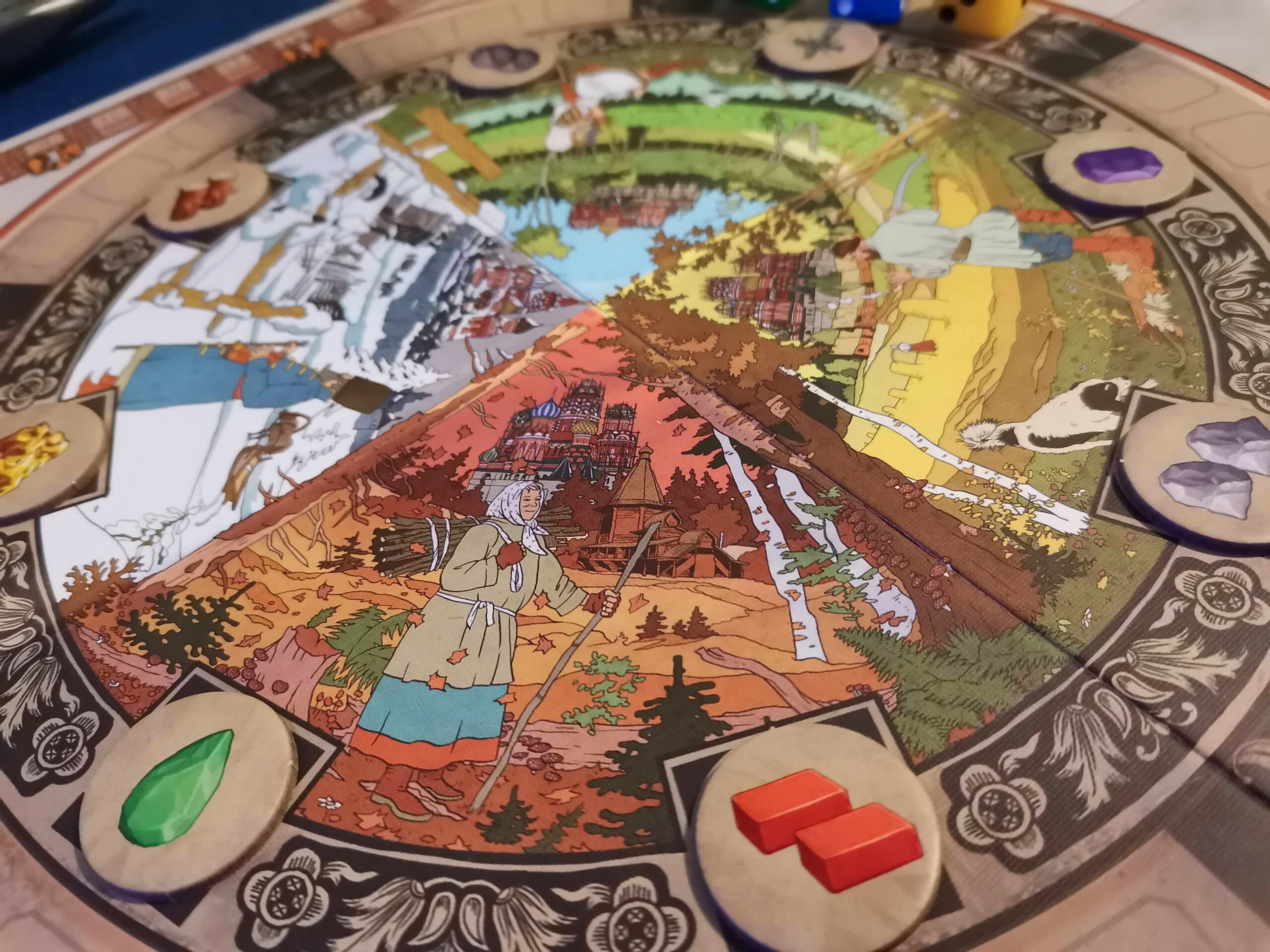
thanks for ur review of Red Cathedral. I think you have criss cross the recognition & prestige points.
You’re absolutely right, I meant to correct that ages ago, I’ll do it now. Good catch!